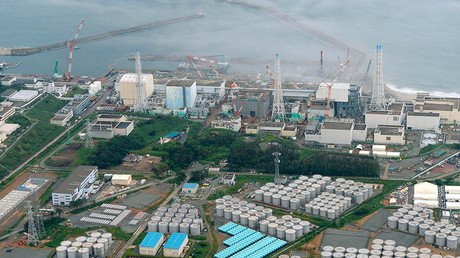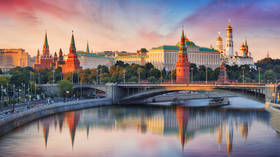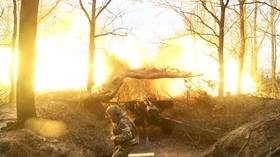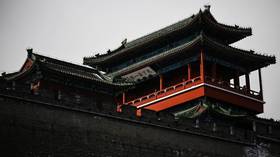‘No plan A’: US unprepared for nuclear crisis as more Fukushima radiation found off West Coast

Higher levels of radiation from Japan’s Fukushima nuclear disaster have been detected off the West Coast of the United States, while energy experts say America is “woefully” unprepared to deal with a similar crisis within its borders.
Five years ago today, in March 2011, a large earthquake and massive tsunami caused a meltdown at the Fukushima Dai-ichi nuclear power plant. More than 30 million Japanese were exposed to the radioactive fallout, while more than 150,000 people evacuated their homes as a result.
In late 2014, scientists at the Woods Hole Oceanographic Institution (WHOI) first detected radiation had reached the California coast. In April of last year, the team recorded the first traces of radiation along the actual shoreline of Vancouver Island in British Columbia, Canada.
Now, marine radiochemist Ken Buesseler and his team have detected the highest level to date, roughly 1,600 miles west of San Francisco. The samples are 50 percent more radioactive than other samples collected so far.
The WHOI stressed that this “is still more than 500 times lower than US government safety limits for drinking water, and well below limits of concern for direct exposure while swimming, boating, or other recreational activities.”
However, Buesseler added that even though this is the case, “the changing values underscore the need to more closely monitor contamination levels across the Pacific.”
Additionally, Buesseler said radiation levels near Fukushima itself continue to be elevated. They are roughly 10 to 100 times higher than the levels his team is recording off the North American West Coast, and scientists are still trying to determine how much Fukushima continues to leak.
“Levels today off Japan are thousands of times lower than during the peak releases in 2011. That said, finding values that are still elevated off Fukushima confirms that there is continued release from the plant,” said Buesseler.
Experts at the anti-nuclear watchdog Beyond Nuclear said Thursday that the US still lacks a “reasonable” plan to prevent a similar event in the US and protect Americans in the event one occurs. The group said 30 GE boiling reactors identical to the ones used in Fukushima – the kind “most vulnerable to catastrophic failure” – are still operating in the US.
‘Is it safe to stay here, Mom?’ #Fukushima evacuees on aftermath of tragedy then and now https://t.co/3b7hj8UzaZ
— RT (@RT_com) March 11, 2016
While the US Nuclear Regulatory Commission (NRC) has tried to require plants to employ radiation filters that can reduce public exposure in the event of an emergency, the industry has successfully been able to lobby against the mandate.
“Not only is there no Plan B for what to do if and when a Fukushima-style disaster happens in the US, there is no Plan A to prevent one either,” said Cindy Folkers, radiation and health specialist at Beyond Nuclear.
She added that public health is “woefully underprotected,” noting that the distribution of potassium-iodide, which helps protect the thyroid from radiation, is not required in the US.
10 scariest videos from the earthquake, tsunami that rocked Japan in 2011 #Fukushimahttps://t.co/3JwBEXmG1kpic.twitter.com/2mQ3oKHk8F
— RT (@RT_com) March 11, 2016
Earlier this week, NRC Commissioner William C. Ostendorff said the agency has “thoroughly studied” the causes of the Fukushima incident. He said that he has visited 48 reactor sites, and that the plants have invested “tens of millions of dollars” in post-Fukushima upgrades.
According to the NRC, all but three of America’s 99 commercial nuclear plants were in the two highest performance categories.
“In addition to ensuring that the nation’s nuclear power plants are safe by inspecting them, the NRC continuously assesses performance,” said Bill Dean, director of the Office of Nuclear Reactor Regulation, in a statement. “The purpose of these assessment letters is to ensure that all of our stakeholders clearly understand the basis for our assessments of plant performance and the actions we are taking to address any identified performance deficiencies.”
On Friday, though, the Disaster Accountability Project also issued a report stating that emergency and evacuation planning related to nuclear emergencies is “dangerously inadequate.” The group noted that more than 117 million Americans live within 50 miles of a nuclear power plant.
Only seven out of 18 jurisdictions within 10 miles of a nuclear power plant could provide any shadow evacuation planning, the group found. Just one out of 92 jurisdictions between 10 and 50 miles could do the same. Less than nine percent of jurisdictions between 10 and 50 miles of the plants could satisfactorily provide any emergency plans specific to nearby nuclear power plants.
“We should learn the lessons of past disasters and not repeat them,” said Ben Smilowitz, executive director of Disaster Accountability Project. “In the five years since Fukushima, we had an opportunity to prepare communities for the unexpected. More than 100 million Americans are at risk because local authorities have failed to plan accordingly.”













